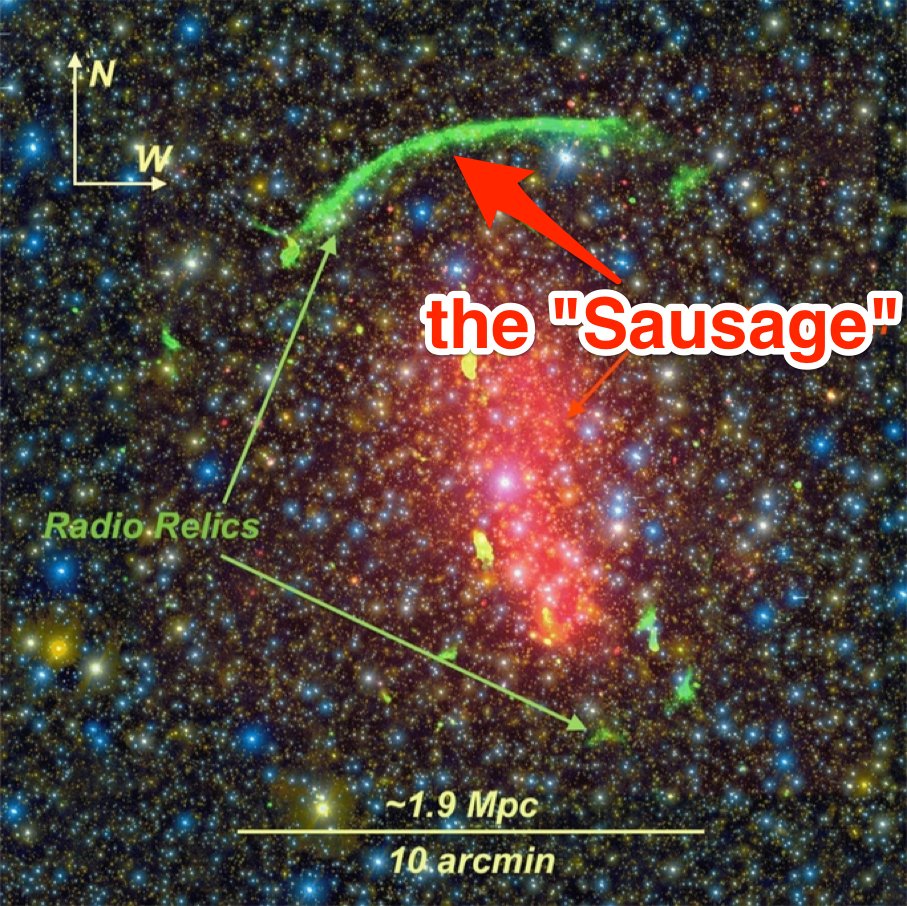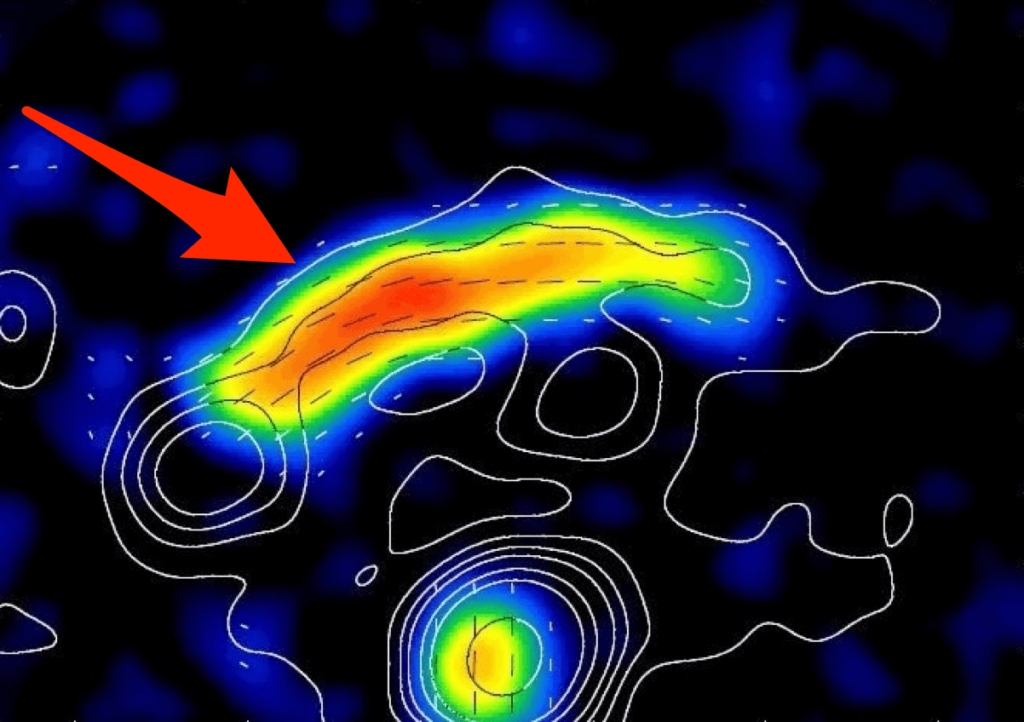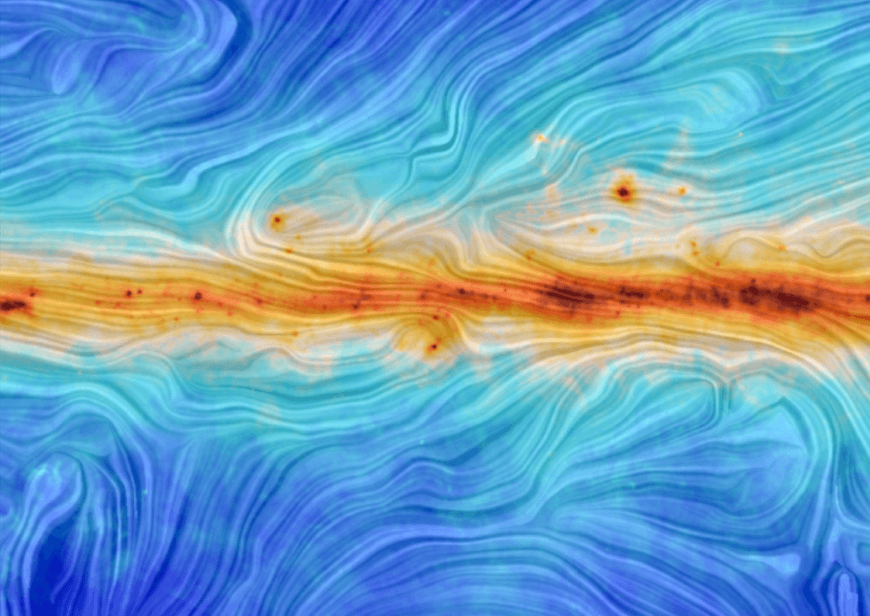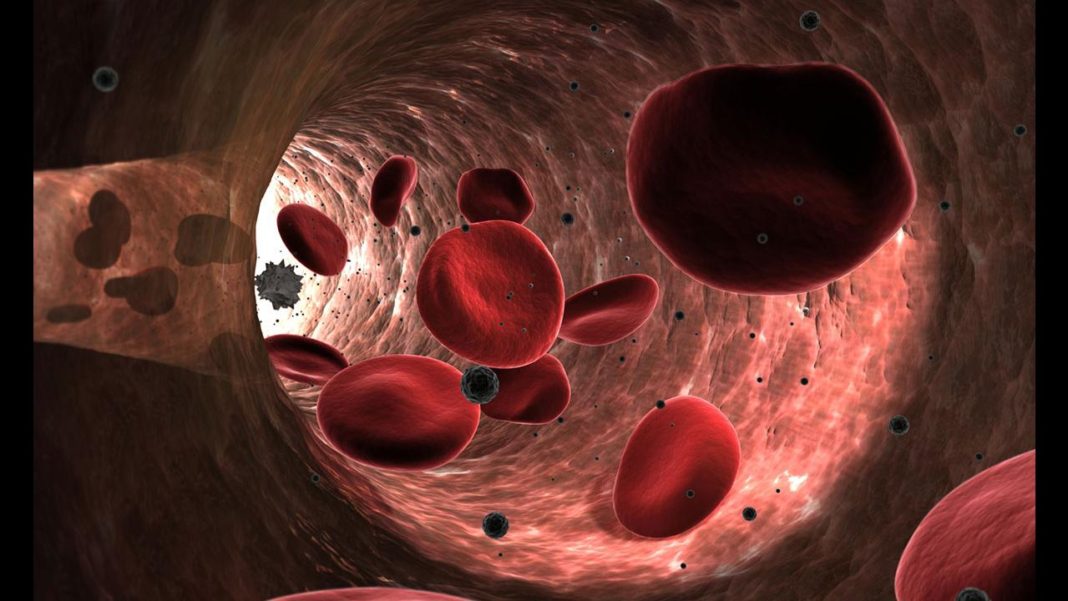Gravity is responsible for sorting galaxies into groups called galaxy clusters. These clusters are some of the biggest known structures of the universe and can be tens of millions of light-years wide or larger. And now, astronomers believe that collisions between galaxy clusters are responsible for generating the largest magnetic fields in the universe ever to be recorded. What’s more amazing is that these humongous fields may be bigger than the actual clusters themselves.
Because of the vast amount of space that’s involved, when clusters of galaxies collide all their contained stars and planets rarely make contact. However, large amounts of gas and dust particles are ejected as a result of the collision that forms arc-shaped clouds called “relics.” Around 70 relics have been detected since the very first one in 1970 and astronomers know much more about them now than they ever did.

A new study was conducted by a group of researchers using a stadium-sized radio telescope in Germany; Their aim was to capture an image of four of the best-known collision relics. Images were taken in radio waves as that’s the part of the spectrum that relics glow most brightly. These images can also show any large-scale magnetism too.
The scientific names of galaxy clusters are quite complex can be quite difficult to remember, so astronomers give them nicknames that are often related to the shape of the relic to help with this. For example, CIZA J2242+53 is nicknamed “Sausage” because of its hot-dog like shape.

Maja Kierdorf is an astronomer at the Max Planck Institute for Radio Astronomy and leader of the study and said in the release, “We discovered the so far largest ordered magnetic fields in the universe, extending over 5-6 million light-years. Such magnetic fields may be even larger than the clusters themselves.”
These fields are massively wider than the Milky Way, and researchers believe they’re caused by a rotation of particle clouds left behind after a collision. The relics’ shape and strength also lead astronomers to believe that these clusters crash into each other at speeds of over 2,000 kilometers per second. The next move for the astronomers now is to go and search for more of these gigantic magnetic fields in space.
More News to Read
- Future Technology We Can Look Forward to in the Next 25 Years
- Boiling Liquid Behaves Differently Onboard the ISS
- Innovative New Process Uses Bacteria to 3D Print Materials
- Is it Time for NASA’s Curiosity Rover to Retire?
- Breakthrough for Hearing Loss Patients Comes in the Form of Replacement Hair Cells











